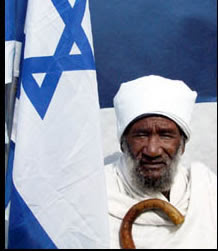A major disagreement between observers and commentators is on the nature of the driving force of change. Is it domestic or international, meaning is it the US holding the strings? Whatever the verdict may be, everyone seems to be surprised and is unsure of the outcome.
If observed carefully, one can see similar trends of change as well as different clusters of countries that may end up with similar political structures. The most obvious are Tunisia and Egypt, which avoided bloodshed and are in transition to constitutional democracies. This does not mean that the armed forces overseeing the transition period will not remain in the equation until a pluralistic regime can mature.
There is another group, like Syria and Bahrain, with varying degrees of participation by armed forces. The fall of minority governments in these countries may have such devastating effects that they may opt to negotiate to remain in power provided that they share that power with other forces which had been kept out of the political center. If they do not, they are likely to fall as well, with much bloodshed.
Countries like Libya and Yemen, with very rigid governments, are likely to fall soon because they have passed the point of reconciling with opposition groups. What could have been a democratic transition is now a civil war inviting global intervention because of blatant human rights abuses.
A fourth group of countries, such as Morocco, Jordan, Algeria, Saudi Arabia and Oman, which are also authoritarian to varying degrees, tried to buy the loyalty of their citizens in the past. Now they are proposing reforms and constitutional changes that will gradually alter their regimes. However, it is doubtful that the people of these countries will agree to the pace and extent of these negotiated reforms. Hence, everything is in limbo.
Needless to say, changes in the Arab world will change the political map of the region as well as the rest of the world. Although those inclined to believe in conspiracy theories do not believe that these changes are driven by internal dynamics, they ought to look at the unease and erratic position of the three non-Arab players in the Middle East -- namely Turkey, Iran and Israel. None of them knows where to stand or how far to get involved and support, or for that matter, intervene, because they cannot figure out how the transition currently under way will fare.
In the past, divisions among Arab countries and a lack of leadership and vision (most of the time) have exposed the region to outside dominance. This was due either to preventing aggression by regional powers against their neighbors (like Iraq to Kuwait) or to defend the needs of major regional countries. Egypt and Saudi Arabia needed US support and protection. Hence, regional Arab countries remained secondary actors in the security architecture of the Middle East.
This void was filled by non-Arab Iran, Israel and Turkey. These first two have been baffled by the democratic trends and likely popularization of governments in Arab countries. So far, they have either dealt with or intimidated the dictatorial ruling groups in these countries and got most of what they wanted. Now that this curtain is about to fall, they feel uneasy about their future dealings with governments not run from royal palaces or military headquarters. The will of the people is likely to reject religious totalitarianism of a religious-military power that has never heeded the wishes and expectations of the Arab people.
Kaydol:
Kayıt Yorumları (Atom)







0 Comments:
Yorum Gönder